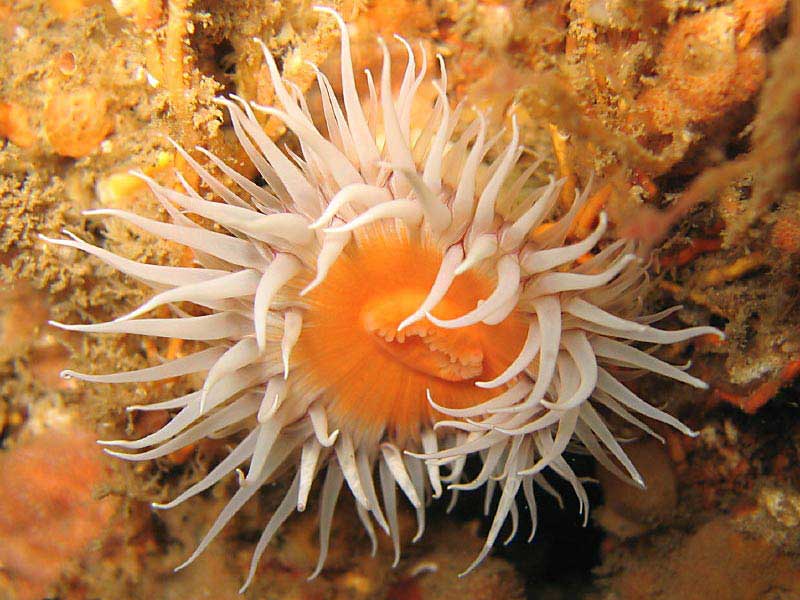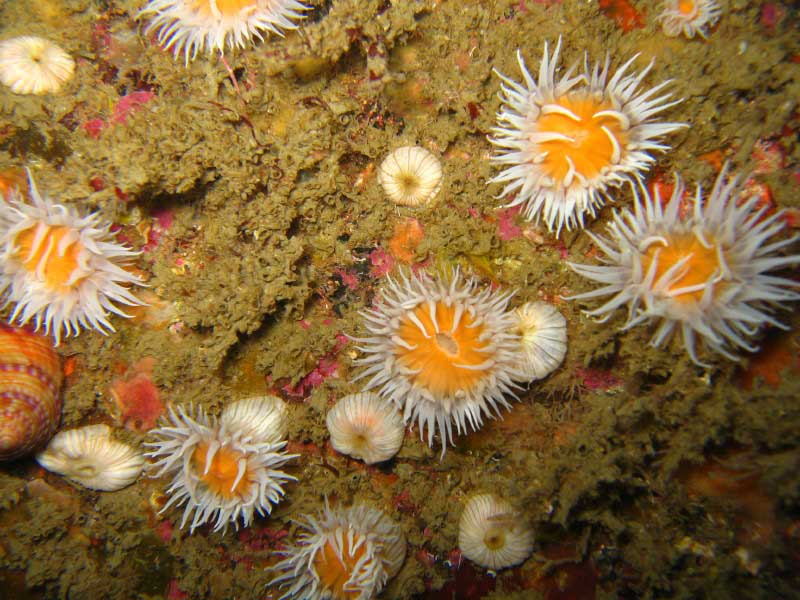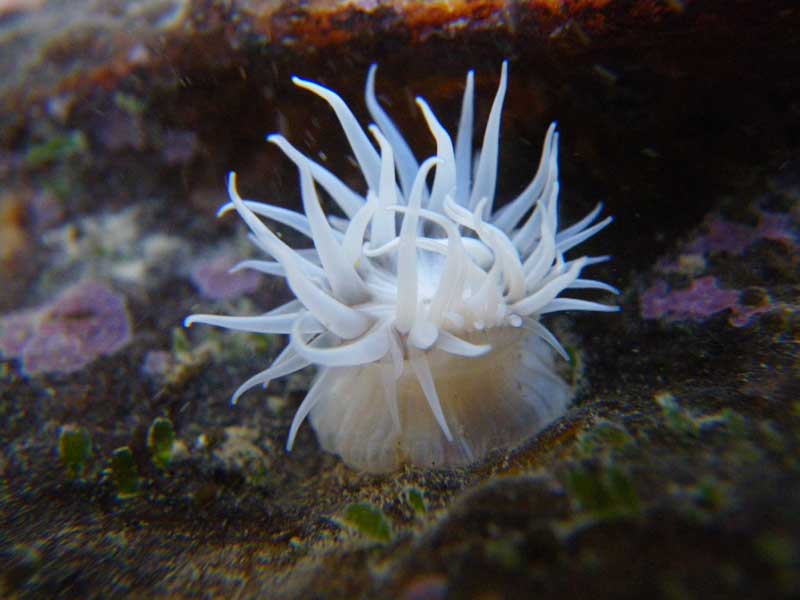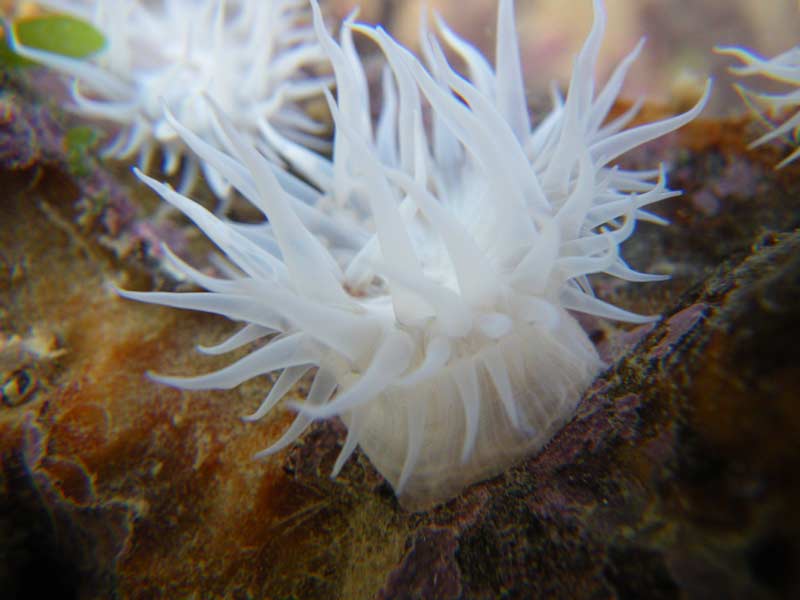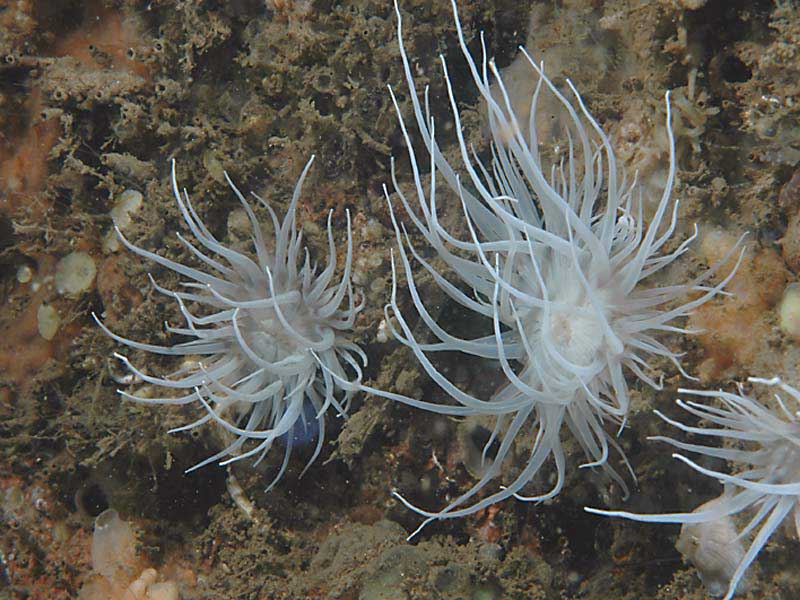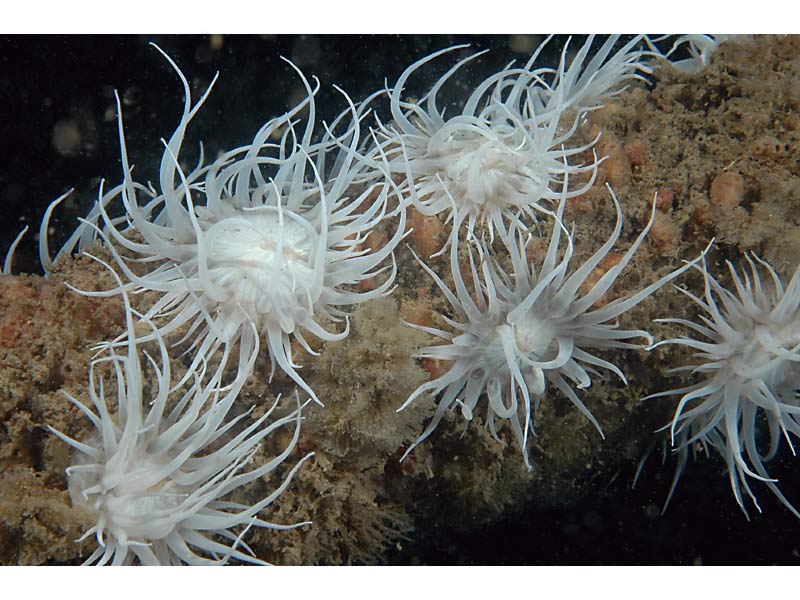Sandalled anemone (Actinothoe sphyrodeta)
Distribution data supplied by the Ocean Biodiversity Information System (OBIS). To interrogate UK data visit the NBN Atlas.Map Help
| Researched by | Susie Ballerstedt | Refereed by | Admin |
| Authority | (Gosse, 1858) | ||
| Other common names | - | Synonyms | - |
Summary
Description
Recorded distribution in Britain and Ireland
Common around the British Isles with the exception of the east coast of Britain.Global distribution
Occurs around the Channel Islands and on the Atlantic coast of France. Probably does not occur further north than the southern part of the North Sea. Southern limits also uncertain but occurs at least to Biscay.Habitat
Occurs on rocks or other hard substrata, usually on flat surfaces rather than in holes or crevices. Also occurs on various algae such as Laminaria or Himanthalia buttons, and is frequently found in the company of algae, Caryophyllia smithii and the sea anemone Corynactis viridis. Occasionally occurs on the shore in shaded situations but is more commonly found sublittorally down to a depth of about 40 m.Depth range
-Identifying features
- Uneven translucent dirty white or grey column with longitudinal stripes.
- White, translucent tentacles.
- White or bright yellow/pale orange disc with vague dark markings at tentacle bases.
- Up to 120 tentacles.
- Tentacles span up to 3 cm across the disc.
- Diameter of column base up to 2 cm.
Additional information
May be confused with Cylista elegans but Actinothoe sphyrodeta lacks the adhesive spots (suckers) on the column present on Cylista elegans. The suckers should not be confused with the cinclides (see Manuel, 1988).Listed by
- none -
Bibliography
Howson, C.M. & Picton, B.E., 1997. The species directory of the marine fauna and flora of the British Isles and surrounding seas. Belfast: Ulster Museum. [Ulster Museum publication, no. 276.]
JNCC (Joint Nature Conservation Committee), 1999. Marine Environment Resource Mapping And Information Database (MERMAID): Marine Nature Conservation Review Survey Database. [on-line] http://www.jncc.gov.uk/mermaid
Manuel, R.L., 1988. British Anthozoa. Synopses of the British Fauna (New Series) (ed. D.M. Kermack & R.S.K. Barnes). The Linnean Society of London [Synopses of the British Fauna No. 18.]. DOI https://doi.org/10.1002/iroh.19810660505
Stephenson, T.A., 1935. The British Sea Anemones, vol. 2. London: Ray Society.
Datasets
Centre for Environmental Data and Recording, 2018. Ulster Museum Marine Surveys of Northern Ireland Coastal Waters. Occurrence dataset https://www.nmni.com/CEDaR/CEDaR-Centre-for-Environmental-Data-and-Recording.aspx accessed via NBNAtlas.org on 2018-09-25.
Isle of Wight Local Records Centre, 2017. IOW Natural History & Archaeological Society Marine Invertebrate Records 1853- 2011. Occurrence dataset: https://doi.org/10.15468/d9amhg accessed via GBIF.org on 2018-09-27.
Manx Biological Recording Partnership, 2022. Isle of Man historical wildlife records 1990 to 1994. Occurrence dataset:https://doi.org/10.15468/aru16v accessed via GBIF.org on 2024-09-27.
NBN (National Biodiversity Network) Atlas. Available from: https://www.nbnatlas.org.
OBIS (Ocean Biodiversity Information System), 2025. Global map of species distribution using gridded data. Available from: Ocean Biogeographic Information System. www.iobis.org. Accessed: 2025-08-08
South East Wales Biodiversity Records Centre, 2023. SEWBReC Marine and other Aquatic Invertebrates (South East Wales). Occurrence dataset:https://doi.org/10.15468/zxy1n6 accessed via GBIF.org on 2024-09-27.
Suffolk Biodiversity Information Service., 2017. Suffolk Biodiversity Information Service (SBIS) Dataset. Occurrence dataset: https://doi.org/10.15468/ab4vwo accessed via GBIF.org on 2018-10-02.
Citation
This review can be cited as:
Last Updated: 08/06/2007

